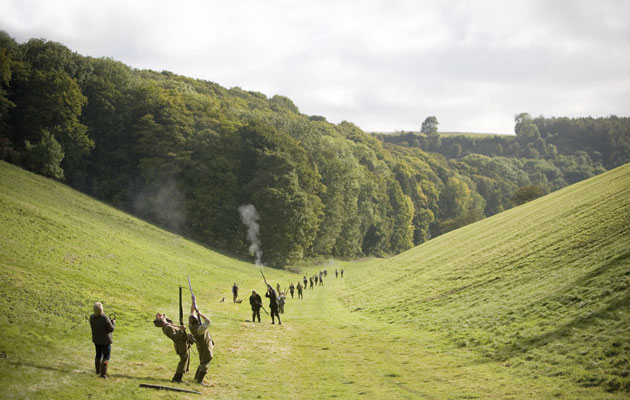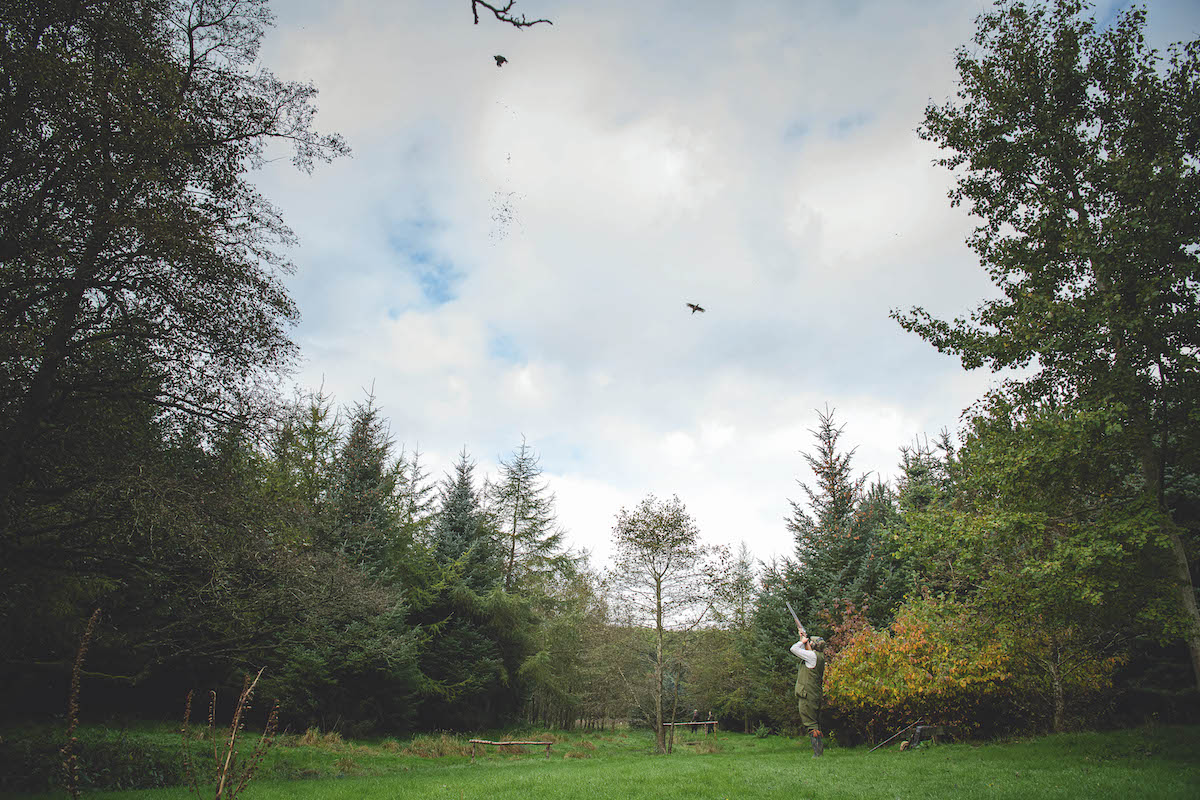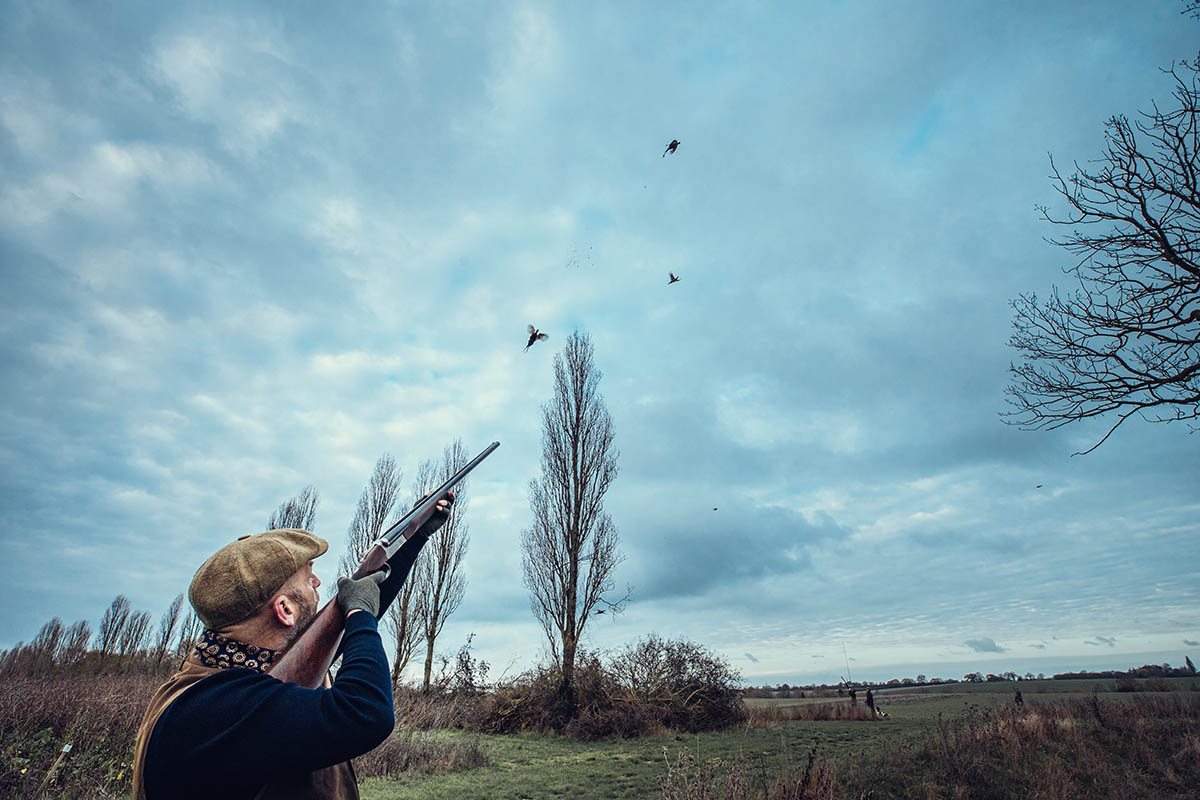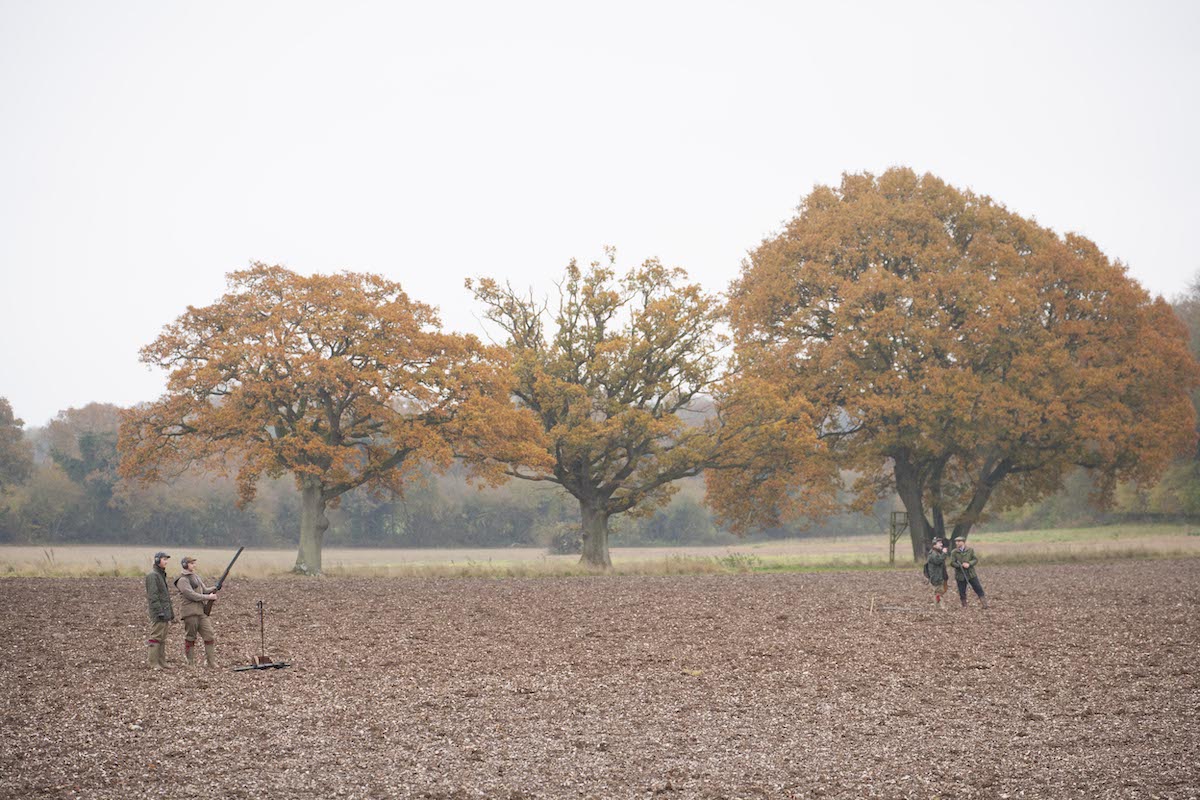Top 10 pheasant shooting memories
Distilling five decades in the pheasant shooting field to 10 stand-out memories - including Warter Priory, Alnwick Castle and Duncombe Park.
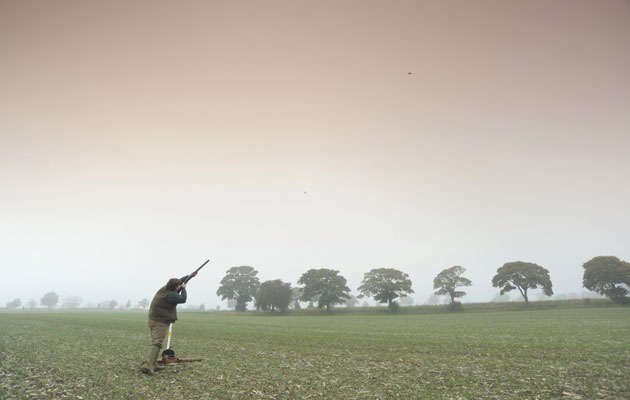
Editing a shooting magazine has its perks. In spite of the constant pressure of immovable deadlines, continually chasing contributor’s for copy and trying to meet the demands of the suits upstairs, you actually can find time to go shooting if you get the juggling act right.
In my best (or most tiring?) season, I managed 55 driven days between mid-October and the end of January. Not that it has always been so hectic.
The fun of living out of a suitcase that winter wore thin fairly soon, but it had to be done. And on the in-between stopovers at home when conditions were right I would be out on the flooded Washes, under the moon, shooting duck. Talk about burning the candle at both ends – even now I can’t work out how, in among all that pheasant shooting, I also got three magazines to the printer on time. Just goes to show that miracles do happen!
Back then I used to keep a record of most trips detailing the shoots and people I met, but annoyingly that massively precious game diary went missing in a house move. I still live in the hope it will turn up, but the reality is it’s very likely now buried miles deep in some council landfill site or other. So all that’s left are hazy memories of so many shoots.
Which 10 from all of them would feature first on a return-visit list, asked Shooting Gazette editor Will Hetherington? What an unfair question. It would’ve been easier had he said top 50 because there are so many that deserve a mention, and for so many different reasons.
Still, he stipulated 10, and 10 he’s got. Here they are:
1. Fernylea, Lothian
I’ve travelled up and down the A1 (The Great North Road) scores of times with gun and rod and never once has the rolling countryside between Berwick and Edinburgh ever struck me as having high-bird potential. On a grey winter’s day with the rain blowing in from the North Sea just yards away, it can also be one of the dreariest places in Christendom. Yet what do they say about books and covers? Hang a left off the main drag as you head north near Cockburnspath and a couple or three miles inland you run slap bang into a series of deep, steep valleys sweeping down from the Lammermuirs. Now the tops of these hills are well known for their grouse shooting which, in recent years, has been going very well indeed for those lucky few who enjoy this majestic sport. But, as with all hills, there is some interesting sport to be had in the valleys too…
I had my eyes opened when my brother-in-law John Hamilton invited me on a small mixed pheasant and partridge day on Fernylea – a shoot that takes in his own farm, as well as those of a few neighbours, including that of shoot organiser John Robertson. John considers that for height and consistency, Fernylea’s partridges would make it into the top five shoots in the country. And the pheasants he puts over the line aren’t far behind. In fact they’re absolute stonkers.
The downside to the place can be the wind, which when it really blows cancels out a number of excellent drives: the birds are there and do flush… it’s just they are so high and fast they can be almost impossible to hit. Hopefully I will be back again this season and John (Robertson) will have done what he said he would do last time – release more pheasants with the partridge. If the wind behaves itself, it should be a real thrill.
2. Vincent Sporting, Crewkerne, Dorset
I’m not at all sure this shoot still exists under this banner but it certainly made a decent enough name for itself when headkeeper Colin Ford was in charge.The Vincent shoot showed some wonderful birds – nothing silly high, just good, sporting pheasants. Yet what made my first visit there so memorable was when I didn’t hit a damned thing all day!
I travelled down the night before with photographer Bob Atkins and stopped en route to buy a pork pie from a retail outlet I won’t name here. It went down a treat but unfortunately it wasn’t quite so delectable when it reappeared unexpectedly in the early hours. Man, was I sick all the next day. The retching was bad enough but the real killer was getting vertigo and not being able to focus whenever I looked up at a bird.
The other notable thing that day was having European FITASC Sporting Champion Brian Hebditch – who then worked for Gunmark (now GMK) – back-gun me for a few drives. He was also a great deal lower; knocking down birds as clean as a whistle, one after another with a little 20 bore. In fairness he benefited very nicely from my illness but he must have wondered what the hell I was doing missing all these birds…
So, what did I learn from this experience? First, I discovered just how effective a 20 bore can be in the right hands and, second – NEVER to touch pork pie again the night before a shoot!
3. Thimbleby, North Yorkshire
Pity, I only once got to shoot this attractive estate sitting below the North Yorkshire moors, and that was when sharing a gun with a former member of the Royal Protection squad, a retired police officer who had gone on to set up his own sporting agency.
My word, though, what a party he put together for the day – a multi-billionaire Texan oil man with his own Jumbo 747, and half a dozen sundry multi-millionaire businessmen friends, also American. They were a good sporting bunch, and decent shots too. Kevin, the organiser (and other half of the gun), kindly let me do some picking-up with my newly trained Springer, Cassie, while he shot the first four drives before lunch, and photographer Tim Scrivener took a few pictures. I remember lighting up a wee cheroot in the morning with Jesse, the Texan, looking at me askance, saying: “What, BOY, do you call that?” He then produced a 10-inch Havana costing $400, all of two inches across. “Now that,” he said, handing it to me “is what WE call a ceeeegar…” Turned out he chewed four of the logs every day. “Can’t smoke ‘em any more. Doctor’s orders,” he told me. No kidding, that cigar was still smouldering a week later, and my jaw ached.
The signature drive after lunch saw us lined out at the bottom of an impossibly steep slope with a quarry face towering up 200 feet or more above. The early birds were well out of range but, as the beaters came a little lower, the pheasants fizzed over very high, but killable. I shot 19 pheasants stone dead without a miss – the first a singleton and the rest all rights and lefts. I’ve never repeated the feat since! To this day I still can’t understand why Winchester stopped loading its magical compression-cased Westerns. But, just maybe, I hit on the real winning formula for high-bird superstar status…$400 ceeegars.
4. Fenland pheasants
The Lincolnshire/Cambridgeshire fens with their flat tracts of featureless land can be forbidding in winter but, given the right weather at nesting time, they can produce prodigious numbers of wild pheasants. If you have never shot them before, grab the chance if it ever comes your way. It’s a driven experience like no other.
I count myself lucky to have shot on numerous fen farms and most notable among these are Nicholas Watts’ multi-award winning shoot at Deeping St Nicholas and Nick Harris’s farm at Newborough. No matter how carefully you go about getting around them, these birds will often be up as soon as they see the shoot trailer park up half a mile away. And unlike most reared pheasants, his wild cousin can, and will, turn 360 degrees if it spots something it doesn’t like the look of in front.
My first fen day came courtesy of the late Jack Pennington on his family farm near Holbeach and I will never forget the first drive. When I eventually got to my peg I took a look around my neighbouring guns but none were in sight… all were laid flat keeping out of sight of the oncoming pheasants.
5. Bryn Mellin, Wales
Wales and its countless fine pheasant shoots has always been a happy hunting ground for me, but a trip to Bryn Mellin was particularly memorable. On this occasion I had been invited on a day organised by Mike Ross, then of cartridge giant Eley Hawk, to showcase its new range of non-toxic Bismuth loads.
After a couple of warm-up drives I heard cheering from the guns to my left as bunches of birds, disturbed from a mountain ridge, passed over, tiny specks, hundreds of feet above. A bit later, after the beaters had come off oxygen, a stream of high birds started to fan out across the line giving us all some extremely testing phesant shooting, John Wraith from Wards Gunshop catching the eye with a stylish and deadly performance. We were all a little sceptical about how the bismuth loads would perform in comparison to lead, but perform they did. In fact one of the highest birds I have seen killed, before or since, dropped to Mike’s own gun. It was an absolute corker that took an age to hit the ground. After the drive we tipped his pockets and cartridge bag out on the grass (and searched the empties) to make sure he hadn’t slipped something illicit into the chambers when nobody was looking…
6. Beaulieu, Hampshire
Mention of that bismuth test day reminds me of a thoroughly enjoyable autumn day trialling Gamebore’s rival non-toxic offering, the tungsten matrix cartridge. These killed well, too. No way can you say Beaulieu’s birds are in the high bracket, but what struck me on this and subsequent visits was their condition: fully feathered and strong fliers even early season thanks to a then policy of early release. It was also there I met that somewhat remarkable lady deer stalker, Jan Andrews, a meeting that eventually led to her joining the Sporting Gun team as a valued contributor on all matters deer related. Jan stayed with the title a number of years before election to the BASC Council soaked up what little free time she had. In an interview, Jan admitted in the magazine that her all-time favourite song was, of all things, Two out of Three Ain’t Bad by Meatloaf. She wouldn’t reveal why this incongruous choice struck such a deep chord but, who knows, maybe one day she will spill the beans?
7. Warter Priory, East Yorkshire
Thanks to the job, I have been lucky and privileged enough to shoot, or report on, more than a few commercial shoots across the UK, mainly in England and Wales, yet strangely enough, not as many as I would’ve liked in Scotland.
Cynics might say that once you’ve seen one big pheasant shoot you have seen ‘em all. Maybe there’s some truth in it: all the big hitters in the West Country show terrific birds, know how to entertain guests and without exception run like clockwork. Warter Priory in East Yorkshire ticks all three boxes as well, but then there are a few more pluses besides… and all thanks to the team involved.
Lots of commercial shoots can throw in a handful of drives and call themselves ‘high-bird’ venues but Warter is one of the select few that can put you under serious birds from start to finish, if that’s what you want, and your team can cope. To watch headkeeper Frank Croft marshal his often unseen beating team is a revelation in itself. Big it might be, but there’s always a friendly family feel to the proceedings here, thanks to a great beating team and bank of pickers-up.
8. Esh Shoot, Co Durham
Years ago a bunch of us formed a little roving outfit with well-known goose guide Alan Murray as shoot captain. First port of call was the Esh Shoot, tucked away in coal mining country near Eshwhinning – a small syndicate affair overseen by landowner John Hankey, who let a couple of days each season to help offset some shoot costs. We shot there every Armistice Day weekend for 10 years or more. Why go anywhere else? All we wanted was great craic and a bag of 70-80 sporting birds. Esh proved perfect, with three drives showing superb birds. Then John, for his own reasons, decided to put the shoot in mothballs. Glad to say he has since had a change of heart and the shoot is up and running with some of the original syndicate members back, steering things. And guess what? We’ve managed to bag a return visit this season! There’s a saying you should never go back in life, but nothing will deter our little syndicate renewing acquaintances with the Esh mob. Only make sure, John, I draw pegs 3, 5 and 7 on the high-bird drives…
9. Duncombe Park, Helmsley
The Feversham Estate has been in the driven pheasant shooting Premier League for the past 50 years or more, and it is still a first choice for countless shooters. It’s a star act in its own right but for me the attraction is personal, and for nostalgic reasons. As boys, cousin Steve Barker and I used to look down on the gun line in Ricaldale on the edge of his parents’ farm and watch princes, MPs and captains of industry such as Henry Ford ‘fill their boots’ on double-gun days. On dank mornings the valley would fill with gun smoke. And we always said one day we’d be in that valley – not to pick up spent cases for our own reloading needs – but to do the ‘shuttin’ ourselves.
Sadly, we never did get to shoot Ricaldale together but we did have a pop a couple of times on other noted drives when Steven was in his 20s, running the farm. Ashdale, Beckdale and the Deer Park were particularly satisfying. Then Steve, fine shot and great pal for so many years was felled by that filthy disease, leukaemia. Fittingly his final resting place is in a peaceful part of the farm at the top of the dale, overlooking the shoot… and boasting the finest vista this part of Yorkshire can possibly offer.
10. Alnwick Castle, Northumberland
What isn’t there to like about this shoot set in such stunning countryside? Owners – the Percy family – understandably keep the best bits for themselves but there are plenty of ‘outer’ drives on this massive estate that show extremely sporting birds, some of them wild stock. I was lucky enough to shoot two days back-to-back which took in moorland edges to lowland park. In anything of a breeze the birds really fly well. Good birds, mixed bag, friendly folk and a happy, knowledgeable, headkeeper in Gary Whitfield. I will be back.

